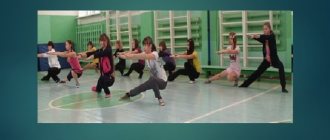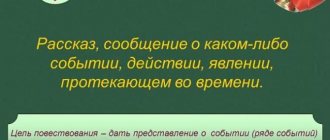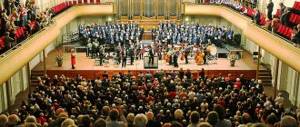Lesson summary "Mom's scarf"
UMK:
"School of Russia"
Class:
3k.
Textbook:
Art. 3rd grade. N.A. Goryaeva, L.A. Nemensky.
Subject:
Mom's scarf.
Target:
teach children to draw a scarf using ornaments.
Tasks
:
- educational - students should know the history of the Russian scarf, the rules for the arrangement and painting of the scarf design;
- developmental - students must be able to apply acquired knowledge in practice, determine the sequence of work;
- educational - to cultivate neatness and neatness in work.
Equipment:
album, paints, brushes, jars of water, one completed version of the work, illustrations of scarves.
During the classes
I.
Organizational moment:
- Hello, guys. Take your seats. Is everyone ready for the lesson?
— At the last lesson you worked very well and together. I hope that our lesson today will be just as interesting and productive.
II.
Updating knowledge:
- We have already said a lot about how important the work of an artist is for our home and the objects that surround us in everyday life. Who remembers what the quarter theme sounds like? — Art in our home.
— Every artist is a bit of a magician. with the help of paints and imagination, he can turn an inconspicuous toy into a bright and cheerful one, make a dark room light and vice versa. The artist decorates our lives with his magic. Let's remember in what things or objects in our home you can see the work of an artist? (Children's answers).
— You mentioned clothes in your answers. Can clothes be called part of art? Why?
-What do you think our lesson today will be devoted to?
- Today we will talk about clothes, or rather, about one of the details of clothing, a headdress - a scarf. The teacher speaks on the blackboard illustration of scarves.
III.
Discovery of new knowledge
:
— Since ancient times, the most desired gift for a woman was a scarf. It was given by the owner of the house, father, brother or groom as a sign of good feelings, love, attention. It was first worn over a headdress, then began to be worn on the hair. The demand for scarves was huge. The elegant scarf has passed from the past into modern days.
— A scarf is also a type of decorative art. The artist creates his own unique pattern on it.
— How does a pattern appear on a scarf? How do you think an artist creates a pattern? (peers into nature, admires flowers and leaves, then selects the necessary details and simplifies them).
— From the details, alternating them with each other, the artist creates a pattern. This is how a sketch of the scarf decoration appears. If the artist likes it, then the factory will make a scarf based on this sketch.
- Is it possible for a scarf worn by a woman to learn anything about herself? For example, her mood?
— Depending on their mood, people dress differently, and they also wear different scarves. What kind of scarf do you think a woman will wear if she is in a good mood? What if she's sad?
— Some scarves are worn often, and some are kept carefully and worn on special occasions. What can you say about them, how are they different?
(on weekdays they wear modest scarves, and on holidays they wear bright, elegant ones).
— Imagine that we are at an exhibition of scarves. Take a closer look at them.
—What type of ornament do you see on these scarves? (floral and geometric).
— What part of the ornament is the main one in the scarf? (in the center).
— In some scarves there is no such center, the pattern goes along the edge, and sometimes in no particular order.
— The field of the scarf has not retained its original black color - it is painted red, blue, green, burgundy, and left white.
— The main character of the scarf is a rose. But now we can meet not only a rose, but also other flowers, butterflies, birds, etc.
— In order to make a scarf, you must first imagine
the person who will wear it. Then draw the shape of the scarf, usually a square.
- Come up with a composition. Composition is a harmonious arrangement of elements.
— Find the compositional center. The compositional center is the most interesting area of the image, which carries a semantic load.
— Rhythm is another important means of composition. The alternation of identical elements in a certain sequence is called rhythm.
— Remember, all elements of the composition must complement each other.
— Let's look at the features of placing patterns on scarves with the help of illustrations that hang on the board. (Discussion of illustrations).
— The design of the scarf can be decorated in warm colors, in cold colors, or in contrasting colors.
— Today we will draw a scarf in warm colors.
- What are these warm colors?
— The most important thing is not to use many different colors. Use three primary colors and their shades.
- This is the kind of scarf I ended up with. (Show your drawing).
IV.
Statement of the educational task:
- So, you can start drawing a scarf.
— Think about the type of ornament, its location, don’t forget what color scheme it should be in, and for whom you are drawing your scarf. Be careful and careful.
V.
Independent work of students.
V I. _
Lesson summary: analysis and evaluation of student work.
— Guys, did you like our lesson?
— Tell us who your scarf is for and where it can be worn.
Grading
- Our lesson is over. Thanks guys for your work! Don't forget to clean your workspaces.




